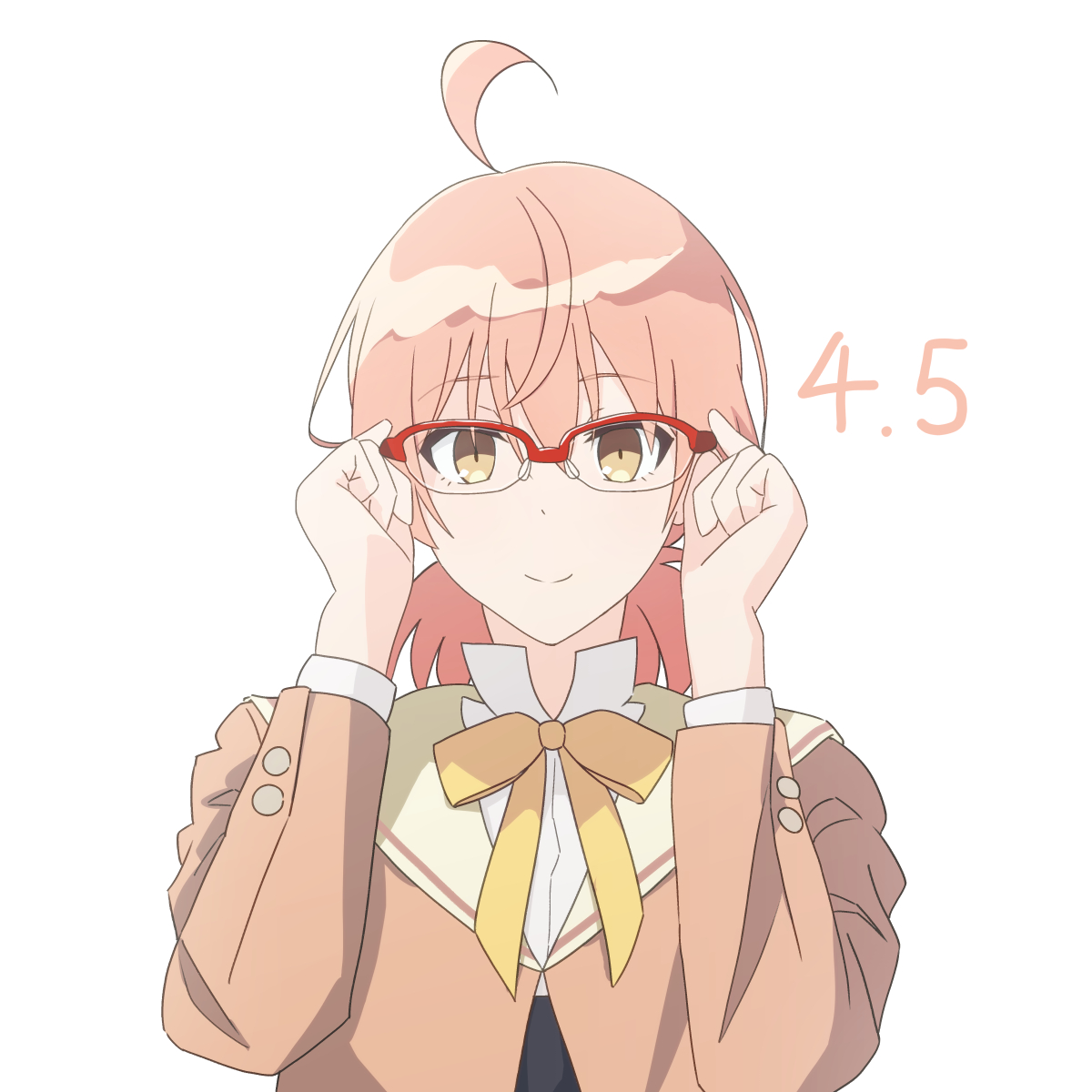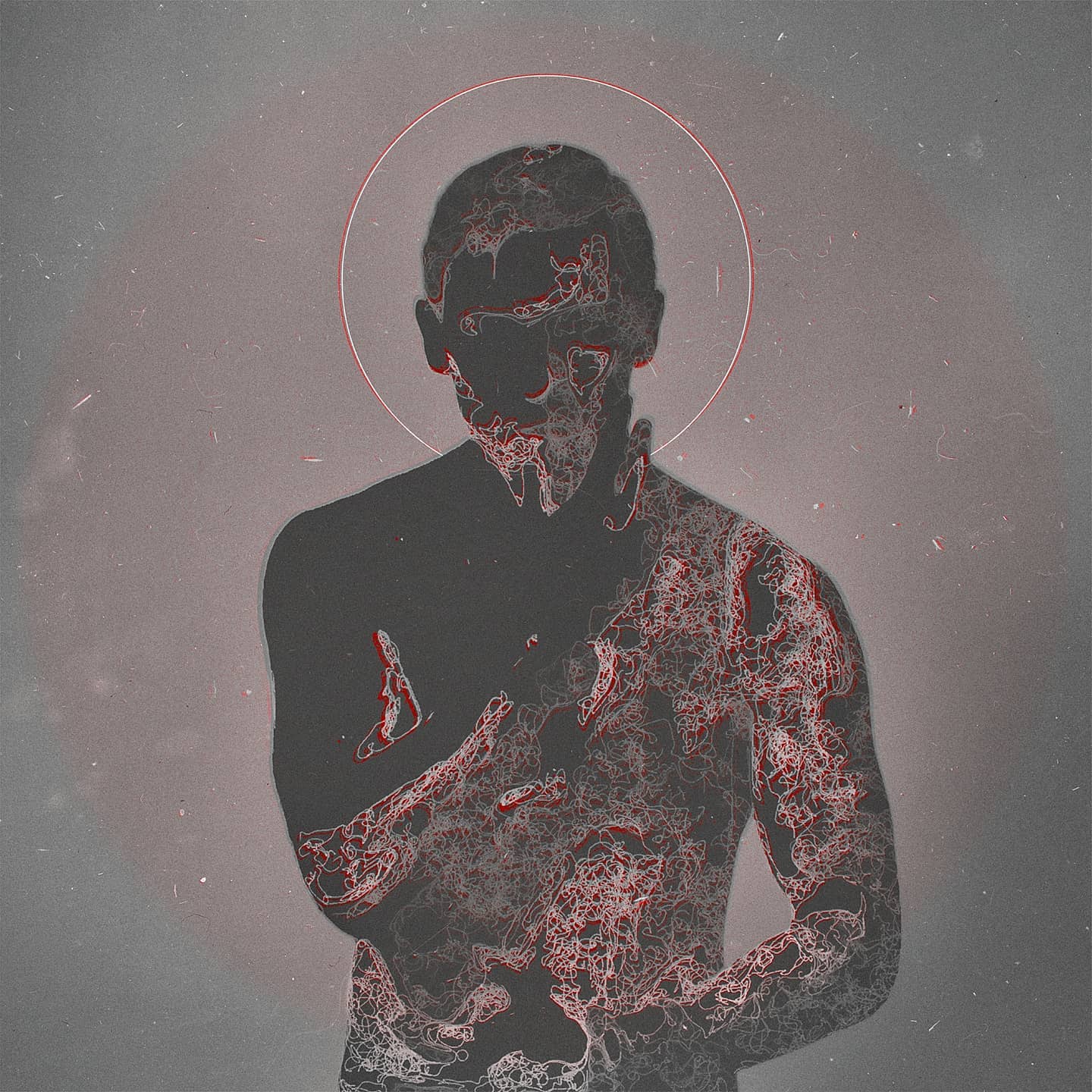I should’ve used it sooner rather than last year when they announced AI integration to Windows. Every peripheral I tried is just worked without needing to install drivers, and it works better and faster than on Windows, just like today when I tried to use my brother’s 3D printer expecting disappointment, but no, it just connected and was ready to print right away (I use Ultimaker Cura), whereas on my brother’s Windows computer I have to wait like 20 seconds; sometimes I have to disconnect and reconnect it again for it to see and ready to use. Lastly, for those who are wondering, I use Vanilla Arch (btw), and sorry for bad English.
My personal experience has been frustrating each time. I’ve tried to switch over at least 3 times over the years, but I always gave up. This time, I installed Ubuntu and immediately had to spend 3 hours trying to get my Xbox controler dongle to work, but just couldn’t do it. Found a driver online that people said would work, it didn’t because it wasn’t properly signed, tried to sign it but the signing app just didn’t create the certificates needed. Gave up, I have Bluetooth so I’d live, though I’d rather use the dongle if I can.
I then immediately encounter another problem that couldn’t be fixed (for the life of me I can’t remember what it was exactly) and just gave up.
The previous time I tried it I remember that among other things, one of my main problems was the lack of clipboard history (which I use extremely often). I tried installing an app for it but all of them either didn’t work or didn’t work the way I want them to or I just didn’t like their look and feel.
I also hate the font rendering on Linux, it always looks blurry compared to Windows, and the double titlebars most apps have (e.g. Discord, at least on Ubuntu), I like my screen real-estate.
I wish I could experience this pain free Linux I keep hearing about on this website. Programs constantly stutter and glitch out, and if the computer goes to sleep while running my Linux partition it absolutely will not wake up again. I know this is a skill issue, but I’ve already spent many hours troubleshooting this… I’ve tried several distros as well. Even the steam compatibility everyone raves about only seems to work for me if I don’t use wayland. I can say with certainty that the average person would be completely unwilling to deal with the experience I have had.
I think this “it just works” experience depends much on the hardware and software you use. But no matter what, in the long term, if you’re not willing to put in time and learn how stuff works, how to troubleshoot, how to check logs, use the terminal, etc. I think you’re going to have a bad time and be disappointed.
I’ve used Linux exclusively for the past 10 years, both at home and at work, and I wouldn’t advise anyone who wants a care-free “it just works” experience. Linux is not good at that, and I think anyone who claims it is does more harm than good.
Linux is good for tinkering, self-hosting stuff, connectivity and flexibility. Most people want their games to work, not this. For me, I love it and I use it for everything including sim racing and VR games.
I am more willing to learn things than the average user I’d say - I work in IT and answer incredibly stupid questions more or less daily. Also, im not a shell expert, but I definitely know my way around bash/zsh/cmd/PS, given the system. I have also been using Linux on and off for around 15 years as well - I had things work well in the past.
I’m guessing my custom built PC might be making things harder. The Nvidia card probably doesn’t help, but I feel like my MOBO is probably responsible for my sleep issues. Maybe I just need to try Pop again, I’m currently running NixOS which is my favourite OS in theory, but in practice configuration is a brute force guessing game.
I haven’t had as bad of an experience with Nvidia as people say - but ofc your mileage may vary depending on your compositor, the apps you use, the distro you use, etc.
I also experienced issues with my system completely freezing after waking up from sleep - for me the issue turned out to be due to bluetooth/wifi drivers, and with this workaround things work fine again: https://github.com/alimert-t/suspend-freeze-fix-for-mt7921e/tree/main
My card is mt7922 (found that out withlshw -C network) but I guess it’s having the same issue, because after applying that fix it all works now.It was really annoying and it took me a while to find the issue, because if you just try to google it you find lots of people with lots of different issues, all manifesting in the same way.
If you’re lucky this is your issue too, and the fix above should do it. 🤞Thanks for inspiring me to search around GitHub - I managed to successfully resume from suspend after an hour or so (still doesn’t work in Wayland, but I’m making progress i guess).
Next up is addressing the weird horizontal tearing in all my games!
Use local LLM model, it will turbo charge your learning curve.
Tells you commands and will explain the errors. This is prime LLM domains IMHO since everytbing Linux is well documented online.
I have tried with many models online, presumably all of which are more robust than local. Will give it another shot soon
They deff. Local ain’t gonna be better. Did you not like the results from llms?
I’m guessing you’re on Nvidia system?, I never had a program glitching or crashing on me ever since I make the switch (I exclusively use Wayland and never touch X11 once), maybe a laptop specific issue just like I can’t get my fingerprint sensor to work on my machine, but luckily it’s not a deal breaker for me
Correct. But I’ve heard tons of people say Nvidia support is fine now, and that amd is still problematic. I have also tried Pop OS
Lucky. I couldn’t get HDR working properly, and most of my GPU features were missing because Nvidia refuses to support Linux (and AMD GPUs can’t keep up). So I had to go back to Windows.
Been trying to switch to Linux since 2004. I’ll try again in 5 years.
Try Nobara or Bazzite. Plasma supports HDR fairly well, and those distros includes a pile of tweaks for Nvidia devices. It might get you sorted.
Tweaks and preconfigured distros aren’t solution here. The driver is still lacking certain features and that can only be fixed by NVIDIA
Nvidia has an open driver now I believe? I install
nvidia-open.Curious to know what you mean by:
AMD GPUs can’t keep up
And,
I had to go back to Windows
you had to, because of HDR? I have an Nvidia RTX 2080 Super, and I don’t know of any features that are missing. Games can do DLSS and ray tracing and whatever else they need. For me, support seems to be absolutely beast on Linux. 🤷♂️
Does that driver support SDR to HDR conversation, AI upacaling, and most importantly: the 3D Settings page? I can live without the first two features, but I can’t believe that there is no 3D Settings page in Linux. It has so many graphics settings that aren’t available in most games.
And yes, AMD GPUs can’t keep up. Especially if you like Ray Tracing. I’m not an AMD hater; I have a 7700X
Does that driver support SDR to HDR conversation, AI upacaling,
Assuming you mean conversion and upscaling. DLSS is AI upscaling, right? I don’t think X11 has much support for HDR. But I’m not well versed in display servers at all to make that claim firmly.
and most importantly: the 3D Settings page? I can live without the first two features, but I can’t believe that there is no 3D Settings page in Linux. It has so many graphics settings that aren’t available in most games.
Ah, you mean that custom program where you set a bunch of settings externally and specifically for each game? I think the program
nvidia-settingshas that? Try it out!And yes, AMD GPUs can’t keep up. Especially if you like Ray Tracing. I’m not an AMD hater; I have a 7700X
Ah that’s a shame. Newer AMD cards are surely better than my old 2080 Super though eh. 🙃
DLSS is AI upscaling, right?
No, not DLSS. RTX Video Enhancement. Makes YouTube look so much better.
I think the program
nvidia-settingshas that? Try it out!It does not. I’m talking about this page. Almost every game in existence is missing several settings that are on this page, especially GPU Power Management Mode, Negative LOD Bias, Max Framerate in the Background, and Max VR Prerendered Frames.
How do you have Cura installed?
You can get it on their official website
So you just used the AppImage. I seem to recall having issues with it, but that’s been awhile. I’ll have to give it another try. Are you using Wayland?
Yes I use the appimage package, I don’t have any issue with it on Wayland, or you can get it on the AUR, you might need to follow this procedure and wait a minute for Cura to detect the USB
Welcome!
For a while now Linux has been better at most personal computing things except gaming. And for server uses an even longer time.
There are some specific hardware/software situations where you’ll need Windows but it’s unlikely to happen at home. Unless you have very peculiar hobbies.
Gaming is my struggle, right now. On x11, I get stable framerates, but even though my benchmarks show 60+ fps, it sure looks lower to my eye. On Wayland, gameplay is smooth, but I keep getting this weird thing where after 20-30 minutes of gameplay I’ll get this weird input lag, where my mouse movement stops and then “catches up” every second or so, resulting in choppy gameplay despite the smooth framerate.
If I can figure that out, I’d happily drop my Windows partition.
mouse movement stops and then “catches up” every second or so
I had that issue with a wired G502 mouse. It was caused by an excessive polling rate, and setting it to 125 Hz fixed it.
Interesting! I’ll give that a try.
I’m curious, did it solve your problem?
Sadly, no, though I’m curious how the other lemming changed their polling rate. I used Piper, so maybe different methods have different effects? Idk. I’ll have to keep tinkering.
Unless you have very peculiar hobbies.
Or you take your photography a bit too seriously! Good noise reduction software is next to impossible to do on Linux. It’s the only reason I have a windows box in my house
Just a thought… Don’t use AI noise reduction! I’ve seen the “magic” they produce and am not impressed. I take pride in capturing the image, not relying on software to recreate it the way I wish it had been shot (I recognize this is a bit hypocritical given that I do use noise reduction in Darktable).
Additionally, I stopped caring about (luminance) noise a long while ago, now, and am perfectly happy with the results I get out of Darktable. In fact, much like film grain, I find modern luminance noise quite pleasing, especially on smaller sensors, and it can add texture and feeling to your image. Still, my default style includes the fantastic, camera model specific, noise reduction profiles by default, which effectively removes color noise and brings luminance noise down to appropriate levels.
The rise in clinical photography and “AI” tools has only given me a stronger drive to be creative and embrace the flaws of my camera and my tools. Call me a romantic, but I want people to know my photos were taken and created by a human, not a machine.
Ok, getting off the soapbox, now xD
I take pride in capturing the image, not relying on software to recreate it the way I wish it had been shot
Unless you’re shooting flat JPGs with no photo modes enabled, and not doing any post processing, then you’re not getting that result. And even if you do that, two cameras shooting the same scene will produce different images, because the process of converting RAW sensor data to the reduced colour palette and bit depth of a JPG image, involves an algorithm deciding how best to recreate (not capture) what you saw with your eye, and no two cameras do it the same way, and neither produce a “true” capture of what you saw.
Ultimately, it’s a meaningless distinction. My camera does in body image compositing, using firmware to stack multiple frames in to a single exposure, giving you light trails, without overexposed static light sources. It uses AI subject recognition to drive its auto focus. It has a 120frame buffer than records records directly to the buffer whilst holding the shutter button half down, and then writes them all to the card when you press, effectively letting you capture moments that you would normally have missed, because human reflexes are imperfect. And the RAW software that comes with the camera literally uses AI noise reduction.
So for me to draw the line and say that AI driven noise reduction (non generative AI at that) is a problem would be a bit hypocritical of me.
As it is, the camera hardware itself does solid noise reduction on the JPGs it produces (using algorithms built in to the firmware) giving really nice results even at high ISOs. But the only way to replicate that with a RAW file, is using the camera supplied RAW software (which doesn’t work on linux), or by using a 3rd partyAI noise reduction app (which don’t work on linux). If I don’t use them, then I’m in the strange situation where my high ISO JPG preview photos look better than an end to end post processed RAW file.
If I was “embracing the flaws that my camera creates” I would be shooting in JPEG mode, using images mostly straight out of the camera, and they would be less noisy than what I can achieve with current linux tools.
I’ve been doing this for 20 years, and using m43 (or four thirds before it) for most of that time. I know what I want from my photography, and I know the tools that give it to me. What I want is for the image to look like the scene that I saw. I don’t care if it’s a pixel perfect match for it. I don’t care about embracing the flaws that a camera introduces, flaws that don’t exist when viewed through the human eye (reduced dynamic range, sensor noise etc), out of some sense of “purity”. Purity that was lost the moment I pressed the shutter on a digital camera that has to encode the image in software to make it visible.
Fair enough! Thanks for sharing that. I think there’s a beauty in photography that we can each create in our own way, and that the process is part of the photographer’s expression, despite the viewer knowing none of that.
What noice reduction software do you use on windows? Very interesting find, do you know what methods your software uses for noice reduction? I wonder if this is something you could open an issue for in the image manipulation softwares that do exist on linux, i.e darktable et.al. :)
Dedicated noise reduction software like Topaz and DxO rely on the GPU. And because of that, they don’t work on Wine or VMs (unless you have a dedicated GPU and can get GPU passthrough functioning).
I use darktable and digikam for every other step of my workflow, but that one step, I just can’t do with Linux
Thank you for making me understand :)
Never heard of DxO or topaz, but I am also no photographer, so it doesn’t really surprise me. I wonder if something like proton could be used to easily make give you gpu support.
I had high hopes that I could make them work that way, but no luck :\
About upscayl u maybe heard https://github.com/upscayl/upscayl
and denoise https://github.com/royerlab/aydin
Upscayl isn’t much use to me, because I don’t need upscaling, only noise reduction.
Aydin appears to only work on PNG files, not my RAW files
At work the only issue I ever found is the requirement to use Power Point for presentations and Word for filing patents. LibreOffice just did not translate well enough. Have not tried OnlyOffice.
Edit: Complex Excel sheets especially with macros would be a problem too. These are not always cross version Excel compatible for that matter. One reason I shifted that stuff to Python long ago and voided that issue.
The sad thing is I’ve encountered funky compatibility issues just between current versions of word. Going from Office 2022 (I think. I honestly can’t remember their LTSC office releases off the top of my head at all) to M365 triggered some minor formatting changes, and going from local word document to one that’s shared on SharePoint completely fucked up all of the images in the document and required many hours of rearranging the images because word still sucks for desktop publishing
I remember working on a large doc around 1990. Pagination and figures, what a nightmare. Sounds like maybe similar issue. I’m not really sure Office impoved after say 2003. They could have called it done at that point.
Image handling has definitely gotten better in the last 10 years or so, but realistically you can get everything you want done with Word 2003 today
These kind of posts make me a little happy. I don’t know exactly why but it does.
Having used Linux on for 25 years or so and now hearing about people who switch from Windows and really enjoying the experience warms my heart a little
Me too, I’ve only used it for a year but every time I see a Linux appreciation post, it makes me happy and makes my day better
I switched last year and brought two computers and four servers along. Very well worth it :)
You went straight from windows to vanilla arch ?
Quite impressive
Vanilla arch is nothing like the manually installed arch of old. It’s as easy to install and use as any other distro. I started with arch too, and my now permanent distro is arch based
I remember the USAF handing me an M16 at 18 years old where all I’ve ever handled before that was even close was the NES zapper.
Haha thanks but it’s not actually my first distro, I’m distro hopping on my first week of switching to Linux, my first ever distro is EndeavourOS>Nobara>Fedora>OpenSUSE>Vanilla Arch
That’s a lot of different distros in one week. How do you give each one enough time to evaluate it before you choose to move to another?
At the time my main goal is to have to all of my games working, while I can make it run on every distro I tried, I found Vanilla Arch is the better one in terms of performance and ease of use (yeah call me weird for saying Arch is easier to use than other distros XD), so I keep using it ever since.
Vanilla Arch is the better one in terms of performance and ease of use (yeah call me weird for saying Arch is easier to use than other distros XD)
Not weird at all, I use Arch on my main system exactly because I’m lazy and it’s easier to use. It’s harder to install, but a lot easier to use.
That’s a good distrohop pipeline
And if something doesn’t work, it’s all your fault somehow. Which is both a blessing and a curse.
That’s fine, I can look up the Arch Wiki for solutions, which is also a learning process for me and if it still doesn’t work, I can just duct tape the workaround myself XD
Tip from long-time arch user (btw). Avoid installing or making changes to system installation without going through pacman. I.e., don’t use install scripts or make install invocations requiring sudo. More often than not that will cause headaches long-term. PKGBUILDs are actually reasonably simple to create if you need to install something not in the AUR, and it will keep you from overwriting files and leaving files behind after uninstalling.
I make a promise to myself that I never install anything outside of the AUR, luckily everything I ever need already available there
Welcome to the brotherhood.
I use Vanilla Arch (btw), and sorry for bad English.
Sure buddy… Is the “bad English” in this thread with us right now?
Is the “bad English” in this thread
It’s in every thread right now.
I laughed when I saw this. Like, it was a guy excited that his computer is working better, including with his printer. Maybe a teensy bit of punctuation I’d do differently, but whatever. It’s the Internet. Then suddenly “oh yeah sorry English isn’t my first language and I’m sure you can all see that”
Yeah, I assumed they just had a typo or two like we all do from tiem to time.
Your English is great, OP
Awesome!
and your english is perfect, dude. no worries. the only suggestion I have for you in that regard is to watch out for run on sentences :)
I’ve been using Linux for almost 9 years now. Shit is never so smooth for me but I still love it.
The only device it has been smooth on has been my Thinkpad T530. Every other install I have has some annoying issue, usually small
Not surprising considering how well Linux support on Thinkpad laptop are.
I’ve had good luck with several Lenovo laptops. ThinkPads and IdeaPads. Everything but the fingerprint readers just works.
Yep as an IdeaPad user, I can confirm that this is very true
Everything but the fingerprint readers just works.
Good to know the struggle for the fingerprint reader wasn’t just me. I did “get it working” but it was extremely hacky and it wasn’t what I was after; I only wanted fingerprint for login, not additionally for sudo, but that’s not how it set up and I didn’t want to spend even more countless hours trying to fix that
You would be suprised how cool Linux can get when you go deep down the rabbit hole, if you really want to go deep into Arch I reccomend trying a tiling window manager like Sway or Hyprland :3
(Btw these are the dotfiles I use: https://github.com/koeqaife/hyprland-material-you)
The Hyprland dev is enough to make sure I never use Hyprland
Ive yet to find a tiling Window manager that looks as good
Yeah, it does look great.
But in terms of tiling WMs, I have high hopes for Cosmic! It’s coming along really well (though not as pretty as Hyprland)
Without having read through your codebase, are you using someone else’s top bar, or did you write it yourself in ags?
I wasn’t satisfied with the performance of any bars I tried for X11 so I wrote my own custom one using the eww widget system. I’ve tried ags for a bit but I couldn’t even make an empty bar window that attaches itself to the top of the screen and spans the entire width of my single monitor. 😅 That part worked flawlessly in eww.
Linux is awesome
& so are you ^🥁 1, 2, 3, 4… 🎸^
Aww, thank you
Yeah. I’ve been trying to get the word out.
I’ve been screwing with Linux for decades, but somewhere along the line, Linux got easier and more reliable than Windows. I was as surprised as anyone. My last couple Linux installs were a cake walk.
I also like Linux more than Mac, but I’m a tinkerer at heart, and Mac’s (relative) lack of fiddly bits (customization options) has kept me from staying on it long.
Same here.
Daily driver is a mac but I always use a desktop Linux machine at home.












